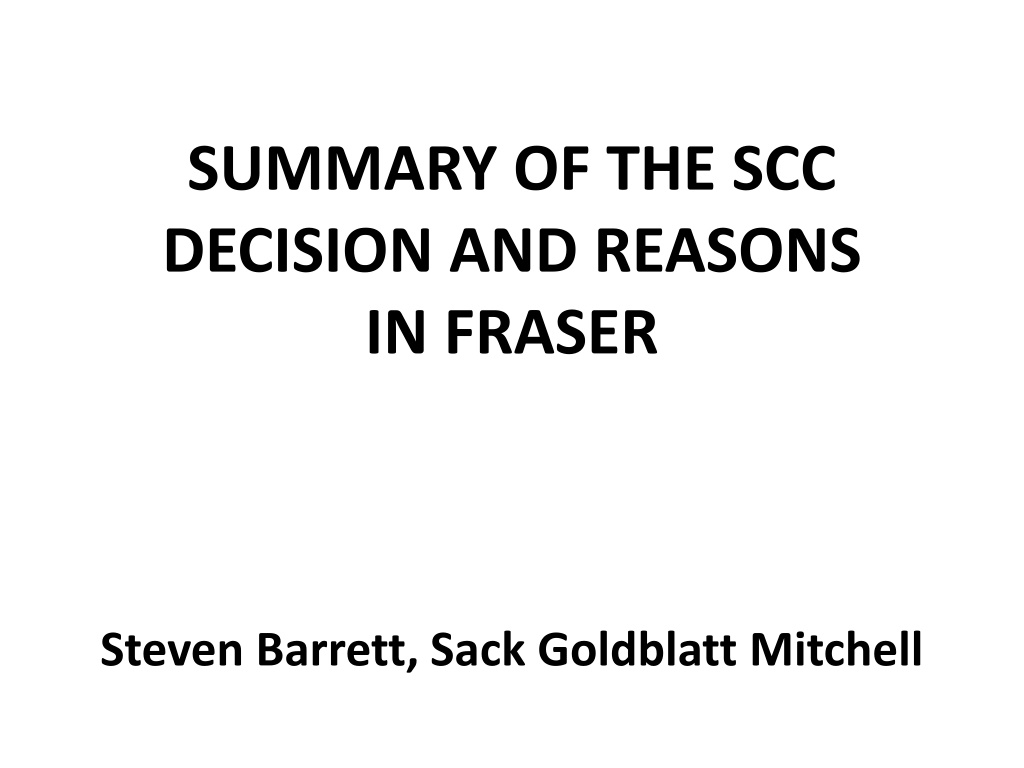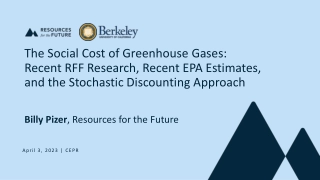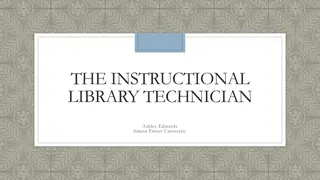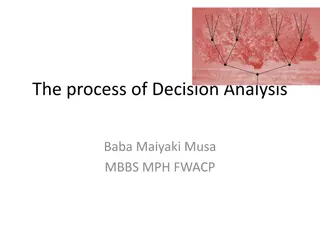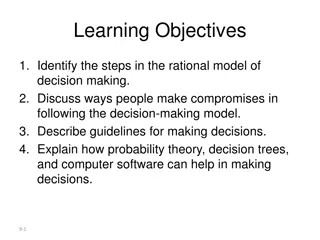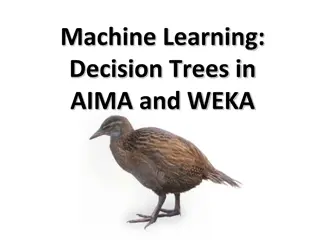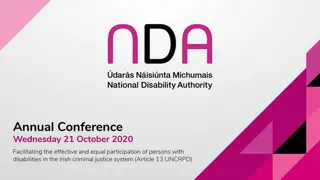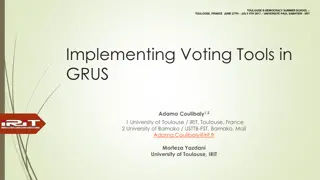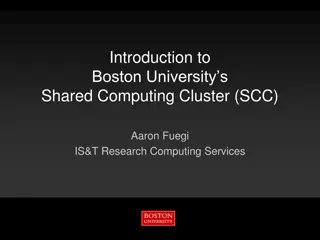Summary of SCC Decision in Fraser Case
The Supreme Court of Canada affirmed the right to associate for workplace goals under freedom of association. Legislation impeding collective goal achievement is a limit on this right. The guarantee is to be interpreted generously. Subsequent rulings safeguard collective bargaining activities and the pursuit of workplace goals in a meaningful manner.
Download Presentation

Please find below an Image/Link to download the presentation.
The content on the website is provided AS IS for your information and personal use only. It may not be sold, licensed, or shared on other websites without obtaining consent from the author. Download presentation by click this link. If you encounter any issues during the download, it is possible that the publisher has removed the file from their server.
E N D
Presentation Transcript
SUMMARY OF THE SCC DECISION AND REASONS IN FRASER Steven Barrett, Sack Goldblatt Mitchell
THE MAJORITYS PRE-HEALTH SERVICES SUMMARY After Dunmore, there could be no doubt that the right to associate to achieve workplace goals in a meaningful and substantive sense is protected by the guarantee of freedom of association, and that this right extends to realization of collective, as distinct from individual, goals. Nor could there be any doubt that legislation (or the absence of a legislative framework) that makes achievement of this collective goal substantially impossible, constitutes a limit on the exercise of freedom of association. Finally, there could be no doubt that the guarantee must be interpreted generously and purposively, in accordance with Canadian values and Canada s international commitments. [P32]
The common goals protected extend to some collective bargaining activities, including the right to organize and to present submissions to the employer. What is required is a process that permits the meaningful pursuit of these goals. No particular outcome is guaranteed. However, the legislative framework must permit a process that makes it possible to pursue the goals in a meaningful way. [P33]
THE MAJORITY: WHAT HEALTH SERVICES DECIDED In Health Services, per McLachlin C.J. and LeBel J., [the Court] held that legislation and government actions that repealed existing collective agreements and substantially interfered with the possibility of meaningful collective bargaining in the future constituted a limit on the s. 2(d) right of freedom of association. [P34]
THE MAJORITY: WHAT HEALTH SERVICES DECIDED: the claimants did not seek the enactment of associational protections. Rather, they asserted that s. 2(d) protected a right to collective bargaining and that the government had violated the constitutional guarantee of freedom of association by legislating to both overturn existing contracts and preclude effective collective bargaining in the future. [P36]
THE MAJORITY: WHAT HEALTH SERVICES DECIDED: s. 2(d) includes a process of collective action to achieve workplace goals (para. 19 [Health Services]). This process requires the parties to meet and bargain in good faith on issues of fundamental importance in the workplace (para. 90). By legislating to undo the existing collective bargaining arrangements and by hampering future collective bargaining on important workplace issues, the British Columbia government had substantially interfered with the s. 2(d) right of free association [P37]
THE MAJORITY: WHAT HEALTH SERVICES DECIDED: Bargaining activities protected by s. 2(d) in the labour relations context include good faith bargaining on important workplace issues (para. 94; see also paras. 93, 130, 135 [Health Services]). This is not limited to a mere right to make representations to one s employer, but requires the employer to engage in a process of consideration and discussion to have them considered by the employer. In this sense, collective bargaining is protected by s. 2(d). [P40]
THE MAJORITY: WHAT HEALTH SERVICES DECIDED: The majority in Health Services held that the unilateral nullification of significant contractual terms, by the government that had entered into them or that had overseen their conclusion, coupled with effective denial of future collective bargaining, undermines the s. 2(d) right to associate, not that labour contracts could never be interfered with by legislation. [P76]
THE MAJORITY IN FRASER: WHAT DOES 2(D) PROTECTION OF GOOD FAITH BARGAINING INCLUDE? Section 2(d) requires the parties : to meet and engage in meaningful dialogue to avoid unnecessary delays and make a reasonable effort to arrive at an acceptable contract [P41] HOWEVER .
THE MAJORITY: THE LIMITS OF FREEDOM OF ASSOCIATION Section 2(d) does not: impose a particular process require the parties to conclude an agreement or accept any particular terms guarantee a legislated dispute resolution mechanism in the case of an impasse Section 2(d) protects only the right . . . to a general process of collective bargaining, not to a particular model of labour relations, nor to a specific bargaining method [P41]
THE MAJORITYS CONCEPTION OF FREEDOM OF ASSOCIATION IN THE LABOUR RELATIONS CONTEXT What s. 2(d) guarantees in the labour relations context is a meaningful process. [P42] A process which permits an employer not even to consider employee representations is not a meaningful process. [P42] Health Services suggestion that [a meaningful process] requires a good faith process of consideration by the employer of employee representations and of discussion with their representatives is hardly radical. It is difficult to imagine a meaningful collective process in pursuit of workplace aims that does not involve the employer at least considering, in good faith, employee representations. [P43]
The protection for collective bargaining in the sense affirmed in Health Services is quite simply a necessary condition of meaningful association in the workplace context. [P43] Laws or state actions that substantially interfere with the ability to achieve workplace goals through collective actions have the effect of negating the right of free association... This requires a process of engagement that permits employee associations to make representations to employers, which employers must consider and discuss in good faith. [P2] Workers have a constitutional right to make collective representations and to have their collective representations considered in good faith. [P51] [Section] 2(d) of the Charter confirms a right to collective bargaining, DEFINED as a process of collective action to achieve workplace goals , requiring engagement by both parties. [P117]
THE MAJORITY: WHAT CHIEF JUSTICE WINKLER GOT WRONG The Court of Appeal held that Health Services constitutionalizes a full-blown Wagner system of collective bargaining, and concluded that since the AEPA did not provide such a model, absent s. 1 justification, it is unconstitutional. The court appears to have understood the affirmation of the right to collective bargaining in Health Services as an affirmation of a particular type of collective bargaining, the Wagner model which is dominant in Canada [P44]
WINKLER C.J. WAS TOO BLINDED BY HIS YEARS OF EXPERIENCE WITH THE WAGNER ACT MODEL TO KNOW THAT: Section 2(d) does not guarantee a particular model of collective bargaining or a particular outcome (para. 91 [Health Services]). [P45] [M}ore fundamentally, the logic of Dunmore and Health Services is at odds with the view that s. 2(d) protects a particular kind of collective bargaining. It is [only] in this derivative sense that s. 2(d) protects a right to collective bargaining no particular type of bargaining is protected. [P46]
THE MAJORITY: NO 2D ENTITLEMENT TO NORMATIVE STATUTORY PROTECTIONS It follows that Health Services does not support the view of the Ontario Court of Appeal that legislatures are constitutionally required, in all cases and for all industries, to enact laws that set up a uniform model of labour relations imposing a statutory duty to bargain in good faith, statutory recognition of the principles of exclusive majority representation and a statutory mechanism for resolving bargaining impasses and disputes regarding the interpretation or administration of collective agreements (C.A. reasons, at para. 80). What is protected is associational activity, not a particular process or result. [P47]
AND, JUST SO YOU GET IT, HEALTH SERVICES DIDN T SUGGEST OTHERWISE Our colleague [Rothstein and Charron] appears to interpret Health Services as establishing directly or indirectly a Wagner model of labour relations. The actual holding of Health Services, as discussed above, was more modest. Health Services affirms a derivative right to collective bargaining, understood in the sense of a process that allows employees to make representations and have them considered in good faith by employers, who in turn must engage in a process of meaningful discussion. No particular bargaining model is required. [P54]
THE MAJORITY: DOES AEPA BREACH 2D? The essential question is whether the AEPA makes meaningful association to achieve workplace goals effectively impossible, as was the case in Dunmore. If the AEPA process, viewed in terms of its effect, makes good faith resolution of workplace issues between employees and their employer effectively impossible, then the exercise of the right to meaningful association guaranteed by s. 2(d) of the Charter will have been limited. [P98] the right of an employees association to make representations to the employer and have its views considered in good faith is a derivative right under s. 2(d) of the Charter, necessary to meaningful exercise of the right to free association. The question is whether the AEPA provides a process that satisfies this constitutional requirement. [P99]
DIGRESSION: THE THRESHOLD FOR ESTABLISHING A 2D BREACH SUBSTANTIAL INTERFERENCE, SUBSTANTIAL IMPAIRMENT, SUBSTANTIAL IMPOSSIBILITY, EFFECTIVE IMPOSSIBILITY, OR WHAT? Laws or state actions that substantially interfere with the ability to achieve workplace goals through collective actions have the effect of negating the right of free association and therefore constitute a limit on the s. 2(d) right of free association [P2] [L]egislation (or the absence of a legislative framework) that makes achievement of this collective goal substantially impossible, constitutes a limit on the exercise of freedom of association [P32] The effect of a process that renders impossible the meaningful pursuit of collective goals is to substantially interfere with the exercise of the right to free association, in that it negates the very purpose of the association and renders it effectively useless. [P33] Dunmore established that claimants must demonstrate the substantial impossibility of exercising their freedom of association in order to compel the government to enact statutory protections [P34] In every case, the question is whether the impugned law or state action has the effect of making it impossible to act collectively to achieve workplace goals. [P46]
DIGRESSION: THE THRESHOLD FOR ESTABLISHING A 2D BREACH If it is shown that it is impossible to meaningfully exercise the right to associate due to substantial interference by a law (or absence of laws: see Dunmore) or by government action, a limit on the exercise of the s. 2(d) right is established [P47] The question is whether the legislative scheme (the AEPA) renders association in pursuit of workplace goals impossible, thereby substantially impairing the exercise of the s. 2(d) associational right [P48] The logic that compels this conclusion, following settled Charter jurisprudence, is that the effect of denying these rights is to render the associational process effectively useless and hence to substantially impair the exercise of the associational rights guaranteed by s. 2(d). [P54] The fundamental inquiry is whether the state action would substantially impair the ability of union members to pursue shared goals in concert ... [P64] If the AEPA process, viewed in terms of its effect, makes good faith resolution of workplace issues between employees and their employer effectively impossible, then the exercise of the right to meaningful association guaranteed by s. 2(d) of the Charter will have been limited [98]
AEPA PROVISIONS 5. (1) The employer shall give an employees association a reasonable opportunity to make representations respecting the terms and conditions of employment of one or more of its members who are employed by that employer. 5. (5) The employees association may make the representations orally or in writing. 5. (6) The employer shall listen to the representations if made orally, or read them if made in writing. 5. (7) If the representations are made in writing, the employer shall give the association a written acknowledgment that the employer has read them.
THE MAJORITY: GOOD FAITH IS IMPLIED STATUTORY TERM Sections 5(6) and (7) are critical. They provide that the employer shall listen to oral representations, and read written representations, and acknowledge having read them. They do not expressly refer to a requirement that the employer consider employee representations in good faith. Nor do they rule it out. By implication, they include such a requirement. [P101] .HOW S THAT THE CASE ???...
FIRST: A statute should be interpreted in a way that gives meaning and purpose to its provisions. This requires us to ask what the purpose of the requirements in ss. 5(6) and (7) is. There can only be one purpose for requiring the employer to listen to or read employee representations to assure that the employer will in fact consider the employee representations. No labour relations purpose is served merely by pro forma listening or reading. To fulfill the purpose of reading or listening, the employer must consider the submission. Moreover, the employer must do so in good faith: consideration with a closed mind would render listening or reading the submission pointless. [P103]
SECOND: Parliament and legislatures are presumed to intend to comply with the Charter; At the time the AEPA was adopted Dunmore had pronounced that the Charter requires meaningful exercise of the right to associate in pursuit of workplace goals. Since Health Services, it has been clear that this requires employers to consider employee representations in good faith. Any ambiguity in the AEPA should be resolved accordingly. [P104]
THIRD: [T]he expressed intention of the Minister in debates on the legislation. When introducing the legislation, she stated: The government is advised that the Supreme Court of Canada decision regarding Dunmore . obligates us to ensure that employees have the protection necessary to ensure that the freedom of association is meaningful. The government of Ontario will meet these obligations. While the Minister also stated that the AEPA was not intended to extend collective bargaining to agricultural workers this may be understood as an affirmation that the AEPA did not institute the dominant Wagner model of collective bargaining, or bring agricultural workers within the ambit of the LRA, not that the Minister intended to deprive farm workers of the protections of collective bargaining that s. 2(d) grants. [P105- 106]
These considerations lead us to conclude that s. 5 of the AEPA, correctly interpreted, protects not only the right of employees to make submissions to employers on workplace matters, but also the right to have those submissions considered in good faith by the employer. It follows that s. 5 of the AEPA does not violate s. 2(d) of the Charter. [P107]
PREMATURITY It is argued that the record thus far under the AEPA gives little reason to think that the AEPA process will in fact lead to good faith consideration by employers. The evidence shows that the respondents attempted to engage employers in collective bargaining activities on a few occasions. On each occasion the employer ignored or rebuffed further engagement. The employers have refused to recognize their association and have either refused to meet and bargain with it or have not responded to the demands of the respondents. [P108]
This history, scant as it is, does not establish that the AEPA violates s. 2(d). Indeed, the union has not made a significant attempt to make it work. As just discussed, properly interpreted, it does not violate s. 2(d). Moreover, the process has not been fully explored and tested. The AEPA, as Farley J. noted, contemplates a meaningful exercise of the right of association, and provides a tribunal for the resolution of disputes. [P109]
Section 11 of the AEPA specifically empowers the Tribunal to make a determination that there has been a contravention of the Act, and to grant an order or remedy with respect to that contravention. The Tribunal may be expected to interpret its powers, in accordance with its mandate, purposively, in an effective and meaningful way. Labour tribunals enjoy substantial latitude when applying their constituent statutes to the facts of a given case. [P112]
WHAT ABOUT INTERNATIONAL LAW AND FREEDOM OF ASSOCIATION THE GOOD NEWS: The majority in Health Services discussed both Canada s current international law commitments and the current state of international thought on human rights (para. 78 (underlining added)). Charter rights must be interpreted in light of Canadian values and Canada s international and human rights commitments. [P92]
MORE GOOD NEWS: MAJORITY SAYS HEALTH SERVICES CONCEPTION OF GOOD FAITH COLLECTIVE BARGAINING RECOGNIZED AT INTERNATIONAL LAW The decision rendered by the ILO Committee on Freedom of Association ( CFA ), in the conflict between the employees of the B.C. health services and the government of British Columbia, concerned the very conflict that formed the factual background of the decision in Health Services. The CFA concluded that the government of British Columbia violated the employees right to freedom of association. It stated that the unilateral cancellation of collective agreements may have a detrimental effect on workers interests in unionization, since members and potential members could consider it useless to join an organization the main objective of which is to represent its members in collective bargaining, if the results of bargaining are constantly cancelled by law [P94]
THE BAD NEWS: APPARENTLY, THE MAJORITY FORGOT THE ILO S FINDING THAT THE AEPA FAILS TO RESPECT FREEDOM OF ASSOCIATION
MAJORITY: SECTION 15 ALSO PREMATURE, BUT NO REFERENCE TO GROUNDS NOT BEING ANALOGOUS the regime established by the AEPA does not provide all the protections that the LRA extends to many other workers. However, a formal legislative distinction does not establish discrimination under s. 15. What s. 15 contemplates is substantive discrimination, that impacts on individuals stereotypically or in ways that reinforce existing prejudice and disadvantage The AEPA provides a special labour regime for agricultural workers. However, on the record before us, it has not been established that the regime utilizes unfair stereotypes or perpetuates existing prejudice and disadvantage. Until the regime established by the AEPA is tested, it cannot be known whether it inappropriately disadvantages farm workers. The claim is premature. [P116]
THE MAJORITYS CONCLUDING FERVENT (BUT NAIVE) HOPE We hope that all concerned proceed on the basis that s. 2(d) of the Charter confirms a right to collective bargaining, defined as a process of collective action to achieve workplace goals , requiring engagement by both parties. Like all Charter rights, this right must be interpreted generously and purposively. The bottom line may be simply stated: Farm workers in Ontario are entitled to meaningful processes by which they can pursue workplace goals. [P117]
JUSTICE ABELLAS DISSENT: THE RETURN TO PLANET EARTH I have great difficulty with stretching the interpretive process in a way that converts clear statutory language and express legislative intention into a completely different scheme. The AEPA does not protect, and was never intended to protect, collective bargaining rights. [P322]
DISSENT: AEPA DOES NOT PROVIDE FOR COLLECTIVE BARGAINING The process created by these provisions is . the full extent of the employer s duties to listen, to read, and to acknowledge receipt. No response is required. [P329] If we compare these duties under the AEPA to the linguistic markers set out in Health Services, we find that the following language is missing in action: negotiate , meet , good faith , engage , exchange , dialogue , consultation , discussions , consideration , accommodation and union . Nor does the key word bargaining appear. [P330]
DISSENT: PURPOSE OF EXCLUDING BARGAINING WAS DELIBERATE Not only is there clarity of language, there is also clarity of purpose. The government s intentions to exclude collective bargaining were forthright. The then Minister of Agriculture and Food, the Honourable Helen Johns, was unequivocal when she introduced the legislation in confirming that the legislation included no right to collective bargaining: However, I need to make one thing very clear here. While an agricultural employee may join an association that is a union, the proposed legislation does not extend collective bargaining to agricultural workers. I d like to say that the Supreme Court was very clear. They said that agricultural workers across the province had the right to associate. They did not say that they had the right to collectively bargain. [P332]
DISSENT: PREMATURITY? GET REAL! In the years since the AEPA was enacted in 2002, there is no evidence of a single successfully negotiated collective agreement or even of any negotiations. I appreciate that statutory interpretation does not draw on the perceptions of the statute s intended consumers, but where, as here, there is perfect harmony between statutory language, legislative intention, and public perception, the usual interpretative tools are vindicated. [P334]
DISSENT: AEPA INFRINGES 2D In addition to finding a violation of s. 2(d) based on the explicit failure, by text and by design, to include even a hint of a process of collective bargaining, let alone a duty to engage in meaningful and good faith efforts to arrive at a collective agreement, I also agree with Winkler C.J.O. that for agricultural workers, the absence of a statutory enforcement mechanism and of majoritarian exclusivity is an infringement of s. 2(d). [P335]
DISSENT: THE RED HERRING OF CONSTITUTIONALIZING THE WAGNER ACT I acknowledge that different models of labour relations exist globally, some of which do not recognize the principle of majoritarian exclusivity (Clyde W. Summers, Exclusive Representation: A Comparative Inquiry into a Unique American Principle (1998-1999), 20 Comp. Lab. L. & Pol y J. 47; Roy J. Adams, Prospects for Labour s Right to Bargain Collectively After B.C. Health Services (2009), 59 U.N.B.L.J. 85). These models, however, have been developed in entirely different historical contexts and systems of collective bargaining and have yet to be seriously road-tested in the Canadian context outside of the construction industry in Quebec. This is not to say that there is no room for innovation in the modalities of the Canadian labour relations model. But to innovate by eliminating a fundamental protection for the most vulnerable of workers is nullification, not innovation. [P351]
THE REVERSERS (ROTHSTEIN AND CHARRON): HEALTH SERVICES HAS HAD ITS DAY, TO THE EXTENT IT IMPOSES SANY CONSTITUTIONAL DUTY TO BARGAIN I respectfully disagree with the Chief Justice and LeBel J. that collective bargaining enjoys constitutional status under the s. 2(d) freedom of association. I do not agree that s. 2(d) requires the state to impose a complex set of statutorily defined reciprocal rights and duties on employers and workers associations, including a duty to bargain in good faith. [P124]
THE REVERSERS: WHILE NO DUTY TO BARGAIN, WORKERS DO HAVE THE 2D CONSTITUTIONAL FREEDOM TO COMBINE TO SEEK IMPROVEMENTS In my view, s. 2(d) protects the liberty of individuals to associate and engage in associational activities. Therefore, s. 2(d) protects the freedom of workers to form self-directed employee associations in an attempt to improve wages and working conditions. What s. 2(d) does not do, however, is impose duties on others, such as the duty to bargain in good faith on employers. [P125] As I have explained through these reasons, I do not accept that s. 2(d) protects a right to collective bargaining. I am, however, of the view that s. 2(d) does protect a voluntary association of workers who wish to use their associational freedoms to come together and attempt to improve their wages and working conditions. [P270]
Under Canadian law, an individual is generally free to bargain with an employer over terms of employment. Because such individual bargaining is generally lawful, it necessarily follows that the decision of individuals to band together to approach their employer must necessarily be protected. The free decisions of individuals to do in association what they can lawfully do alone lies at the very heart of s. 2(d) protection, and it therefore follows that s. 2(d) must protect the decision of individuals to come together, to form a bargaining position and to present a common and united front to an employer. [P271]
THE REVERSERS: HEALTH SERVICES WRONGLY PROTECTED DUTY TO BARGAIN AND ENHANCEMENT OF BARGAINING GOALS It is this shift from protecting what is necessary to exercise the freedom to associate, to constitutionalizing the goals of an association that is, negotiating a collective agreement which results in Health Services being inconsistent with the ruling in Dunmore. The majority in Health Services found that the freedom of association is meaningless unless the government also imposes a duty on employers to bargain in good faith, and protects the fruits of that bargaining process. The focus shifted in Health Services from protecting the right to associate to enhancing the goals of the association. This was an express break from Dunmore. [P156]
While s. 2(d) protects the ability of workers to come together and to organize with a view to engaging in collective bargaining with an employer, s. 2(d) does not impose any obligation on an employer to actually negotiate with a group of employees. In the individual case, there is generally no legal obligation on an employer to negotiate with the employee. It is entirely permissible for an employer, in the course of negotiating a new contract with an employee, to make a take it or leave it offer to an employee, which the employee may then accept or reject. Thus, just as an employer can decline to meet or negotiate with an individual, so can an employer decline to meet or negotiate with a group of employees. [P273]
The Chief Justice and LeBel J. say that the freedom to engage in a coordinated attempt to negotiate with one s employer is meaningless if it is not backed up by a reciprocal duty on the part of the employer. I cannot agree. The right to make representations in association is not meaningless. It is meaningful because of the increased persuasive weight carried by collective representations rather than individual representations. Indeed political parties are formed on this precise premise. [P292]
THE REVERSERS: FRUITS OF BARGAINING NOT PROTECTED Although Health Services purported to constitutionalize the process of collective bargaining rather than its fruits, it in fact granted constitutional protection to the collective agreements on the basis that they were the fruits of that process. [P216] My view is consistent with that of Professor Hogg who observed that [t]his ruling elevated collective agreements above statutes in the hierarchy of laws, and granted them virtually the same status as the provisions of the Charter itself : p. 44-9. Indeed, in the Prostitution Reference Justice Lamer (as he then was) explicitly rejected the idea that a constitutional guarantee safeguarding freedom of contract was included under the Canadian Charter. [P218]
THE REVERSERS: IF HEALTH SERVICES STANDS, WINKLER C.J S JUDGEMENT MUST STAND!!! Winkler C.J.O. justified adding the mechanism for resolving bargaining impasses by explaining that the bargaining process would be jeopardized if the parties had no recourse to a dispute resolution mechanism when faced with fruitless bargaining [P258] Indeed, when a duty is imposed on a party by law, it must be accompanied by sanctions or means of enforcement if there is non-compliance with the duty. Without sanctions or means of enforcement, compliance with the duty would be, to all intents and purposes, voluntary. This would hardly meet the requirement, according to the Chief Justice and LeBel J., that collective bargaining be mandatory. [P259]
[The majority] limit constitutionalization to collective bargaining imposing a duty on employers to bargain in good faith. The reasons of the Chief Justice and LeBel J. provide no explanation for why Winkler C.J.O. is wrong. As the majority in Doucet- Boudreau said in discussing minority language educational rights: A purposive approach to remedies in a Charter context gives modern vitality to the ancient maxim ubi jus, ibi remedium: where there is a right, there must be a remedy (para. 25). I cannot agree that a right can be workable without the imposition of an appropriate remedy. [P261]
[F]or a duty to bargain in good faith not to be an illusory benefit, there must be both a way of dealing with bargaining impasses as well as an effective remedy for persistent breaches of a duty to bargain in good faith. The first requires that there be some default mechanism for resolving the dispute in case an impasse is reached such as striking or binding arbitration while the second may require, in extreme circumstances, the imposition by an arbitrator of particular terms of a collective agreement. [P268]
THE REVERSERS REJECT PREMATURITY The Chief Justice and LeBel J. say that [i]t is premature to argue that the holding in Health Services, rendered four years ago, is unworkable in practice (para. 83). They say that it takes time before the unworkability of a decision emerges. I disagree. Winkler C.J.O. s conclusion that a constitutional right to meaningful collective bargaining must include constitutionalizing elements of the Wagner model provides strong support for the proposition that, without these protections, compulsory collective bargaining is unworkable. [P262]
